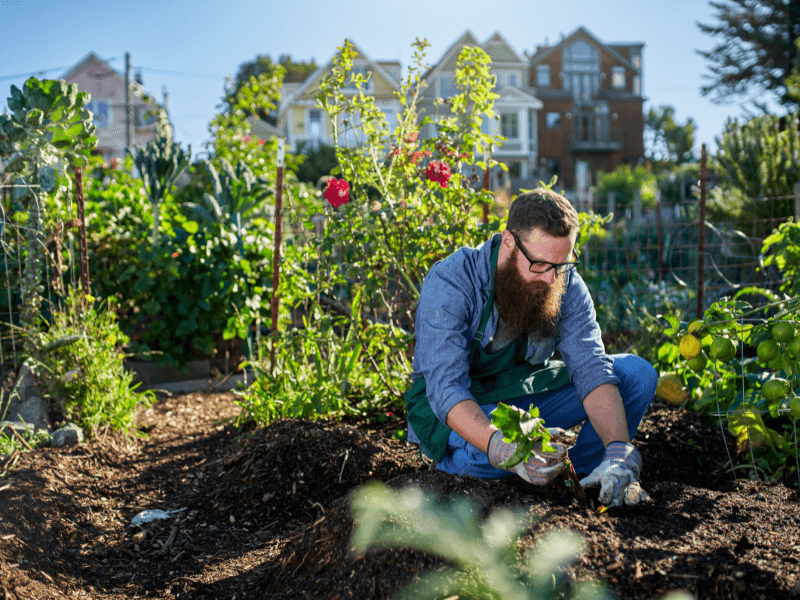Urban Gardening for Beginners, Start Today!

Urban Gardening for Beginners, Start Today!
Ever felt the urge to grow your own food but thought you didn’t have the space? Welcome to the world of urban gardening for beginners! Whether you live in a bustling city or a cozy apartment, urban agriculture is not only possible but also incredibly rewarding. Let’s dive into how you can get started with this sustainable and fulfilling hobby.
Why Urban Gardening?
Urban gardening for beginners is more than just a trend; it’s a lifestyle. Imagine growing your own fresh herbs, vegetables, and even fruits right in your backyard, balcony, or even indoors. Not only does it save you money, but it also promotes sustainable living. Plus, there’s nothing quite like the satisfaction of biting into a tomato you grew yourself.
Getting Started with Urban Agriculture
Understanding Your Space
The first step in urban gardening for beginners is assessing your space. Do you have a balcony, a small yard, or just a windowsill? Each space offers unique opportunities. For instance, a balcony is perfect for container gardening, while a windowsill can be ideal for indoor gardening.
Choosing the Right Plants
Not all plants thrive in urban environments. Opt for hardy, low-maintenance plants like herbs, leafy greens, and small fruit trees. Tomatoes, peppers, and lettuce are great starting points. If you’re short on space, consider vertical gardening, where plants grow upwards rather than outwards.
Container Gardening: The Basics
Selecting Containers
Container gardening is perfect for small spaces. You can use anything from pots and planters to repurposed buckets and old boots. Ensure your containers have good drainage to prevent root rot.
Soil and Fertilizer
Good soil is key to successful urban gardening for beginners. Opt for a well-draining potting mix enriched with compost. Regularly fertilize your plants to ensure they get the nutrients they need.
Indoor Gardening: Bringing Nature Inside
Light and Temperature
Indoor gardening requires careful attention to light and temperature. Most plants need at least six hours of sunlight daily. Place your plants near a south-facing window or use grow lights to supplement natural light.
Watering and Humidity
Indoor plants need consistent watering but be careful not to overwater. Use a moisture meter to check the soil’s moisture level. Maintain humidity by misting your plants or placing a tray of water nearby.
Vertical Gardening: Maximizing Space
Setting Up a Vertical Garden
Vertical gardening is a space-saving solution for urban gardeners. You can use trellises, wall-mounted planters, or even hanging baskets. Choose plants that naturally grow upwards, like beans, peas, and cucumbers.
Care and Maintenance
Vertical gardens require regular pruning to keep plants healthy and manageable. Ensure your plants get enough sunlight and water, and consider using a drip irrigation system for consistent watering.
Sustainable Living through Urban Gardening
Reducing Food Miles
Urban gardening for beginners is a step towards sustainable living. By growing your own food, you reduce the need for long-distance transportation, lowering your carbon footprint.
Composting and Recycling
Composting is a great way to recycle organic waste. Use compost to enrich your soil and reduce the need for chemical fertilizers. Visit www.urbanfarm.org for more tips on sustainable urban farming.
Tips for Successful Urban Gardening
Start Small
Don’t overwhelm yourself by trying to grow too many plants at once. Start with a few easy-to-grow varieties and expand as you gain confidence.
Observe and Adapt
Pay attention to how your plants respond to their environment. Adjust watering, light, and fertilizer as needed. Gardening is a learning process, so don’t be discouraged by setbacks.
Join a Community
Connect with other urban gardeners. Join local gardening clubs or online forums to share tips, ask questions, and get inspired.
Conclusion
Urban gardening for beginners is an exciting journey that combines creativity, sustainability, and the joy of growing your own food. Whether you’re experimenting with container gardening, indoor gardening, or vertical gardening, every step brings you closer to a greener, healthier lifestyle. So, what are you waiting for? Grab your gloves and let’s get growing!
Frequently Asked Questions
What are the best plants for urban gardening?
- Herbs, leafy greens, tomatoes, peppers, and small fruit trees are excellent choices for urban gardens.
How much sunlight do indoor plants need?
- Most indoor plants need at least six hours of sunlight daily. Place them near a south-facing window or use grow lights.
What is vertical gardening?
- Vertical gardening involves growing plants upwards using trellises, wall-mounted planters, or hanging baskets, maximizing space in small areas.
How can I make my urban garden sustainable?
- Reduce food miles by growing your own food, compost organic waste, and use recycled materials for containers and trellises.
Where can I find more resources on urban gardening?
- Visit www.urbanfarm.org for more tips and resources on sustainable urban farming.
0 Response to " Urban Gardening for Beginners, Start Today!"
Post a Comment